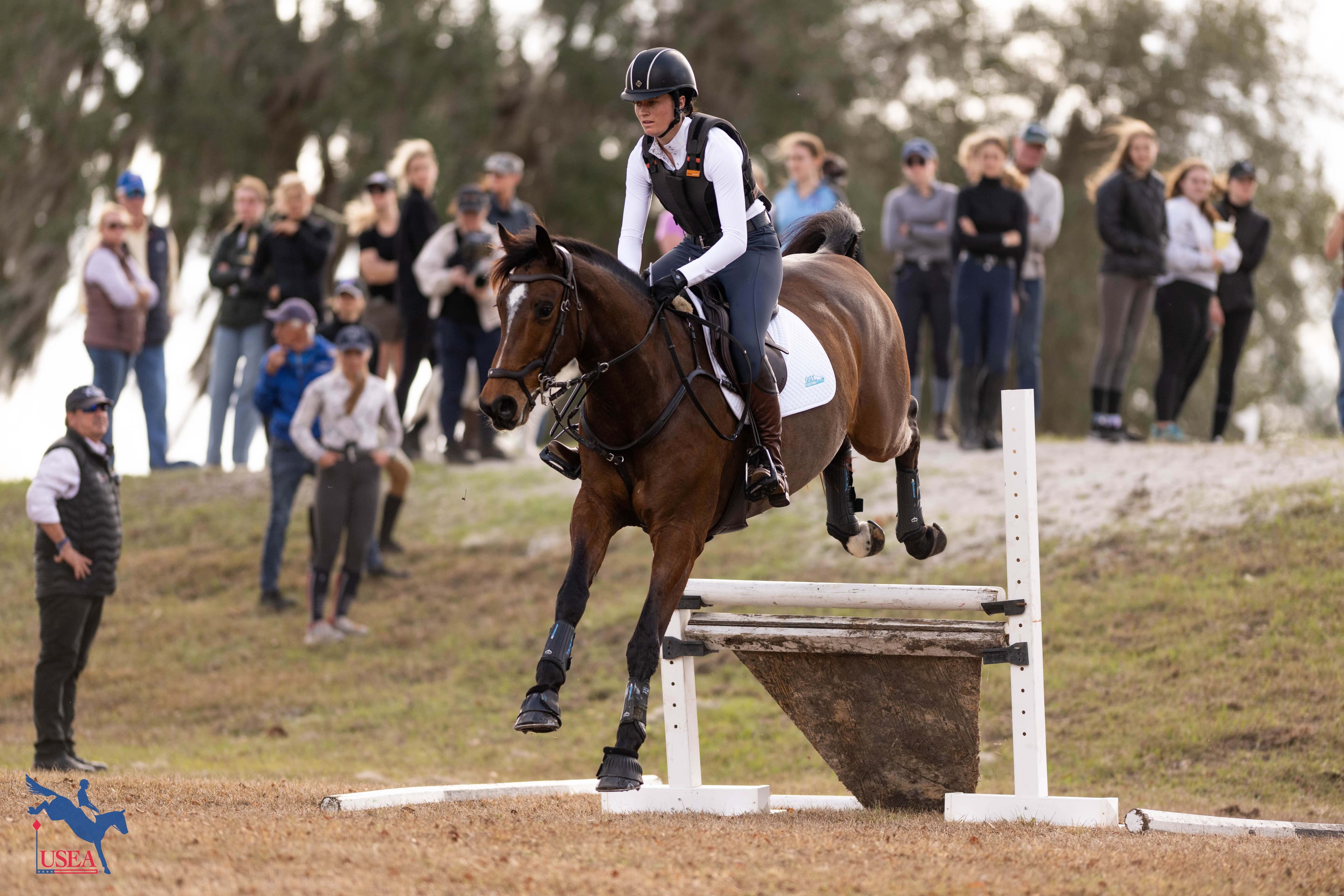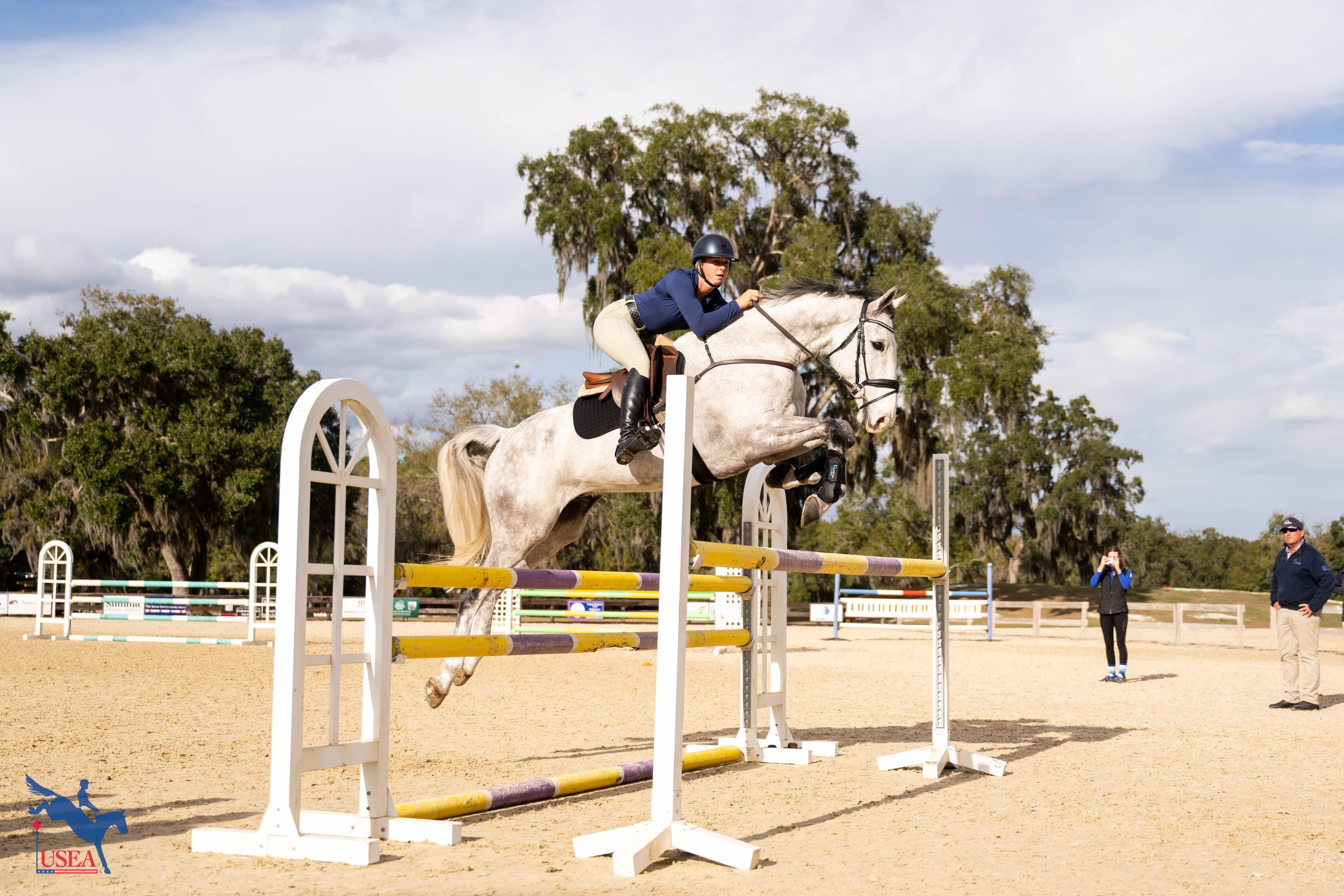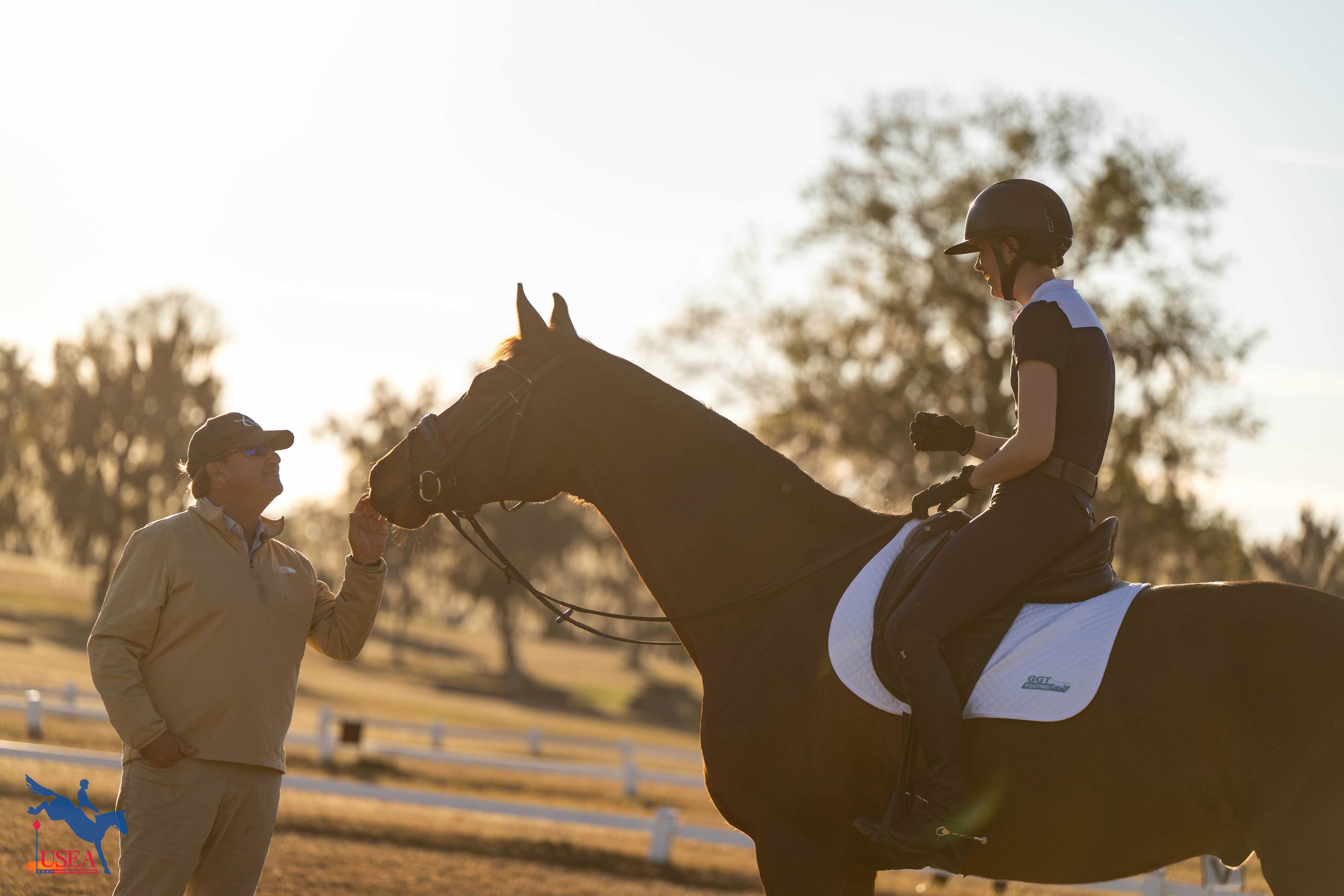Horse Heroes: One2One
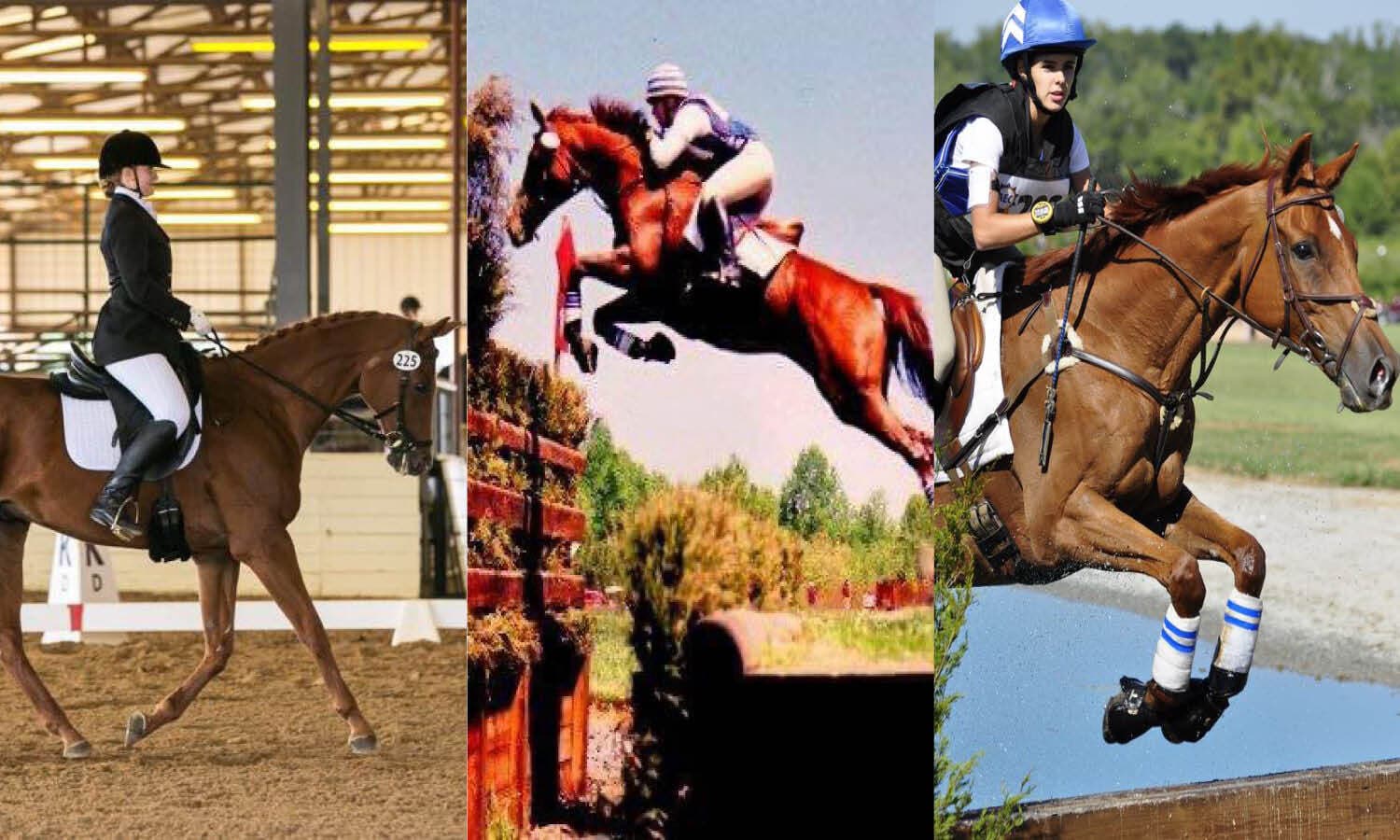
In 1994, a Thoroughbred colt by Kentucky Jazz and out of Oui Oui, bred by Mickey and Marshall Robinson, was born in Texas. Under the name Gentleman Jazz, he raced just two times at Lone Star Park in Grand Prairie, Texas as a 3-year-old, never placing and amassing no earnings.
Then, Gentleman Jazz’s story becomes fuzzy. Some years later, Wistie Oppenlander found him at Treeline Stables in Parker, Texas. “I remember that there was a big gap in history from the ownership papers,” she recalled. “He was starved to death and [the folks at Treeline] had taken him in.”
“When I first rode him, he wouldn’t jump anything,” Oppenlander recounted. “And I mean just flat-out refused. I didn’t push it, because I figured he would make a dressage horse. After a year or so, I jumped something just for the heck of it. He sailed over it, didn’t hesitate, and I realized belatedly that not only could he jump, he was a really good jumper.” Oppenlander rechristened the gelding Daily Double with the barn name “Sydney.”
Oppenlander went to Becky Roper in Pilot Point, Texas for help training Sydney. “He was bold but anxious, and had quite a spook,” Roper said of Sydney when he first came to her for training. “He would spook at all sorts of things at different times, days, and moods. That was just him and you had to work with him and just redirect it.”
Sydney’s spooky nature wasn’t quite the right fit for Oppenlander, so Roper took over the ride and went back to the very basics with him, starting him out over poles on the ground to build his confidence. In the spring of 2003, at the age of 9, Sydney completed his first USEA recognized competition at the Novice level with Roper in the irons.
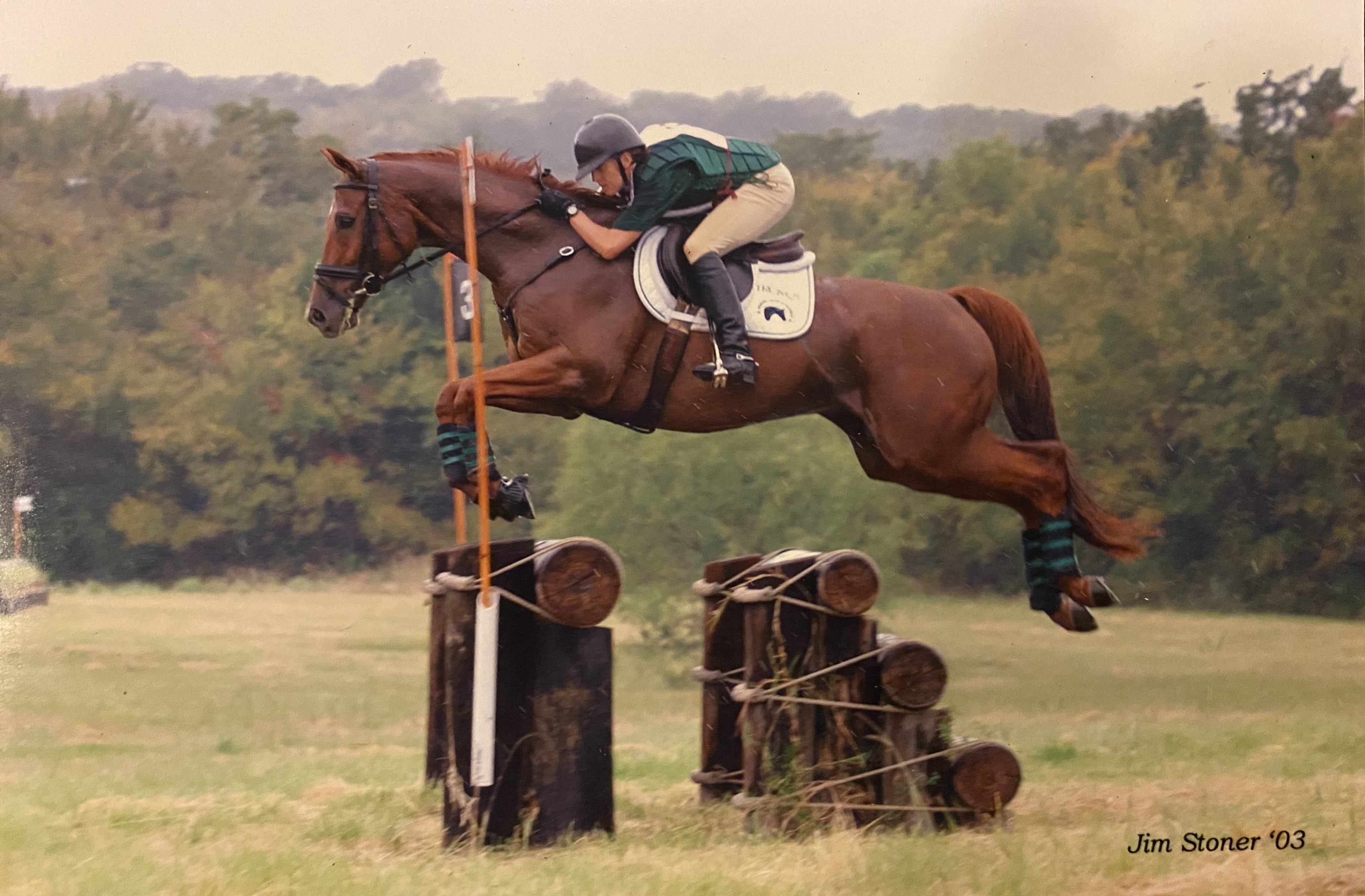
In 2004, Sydney was sold to Mike Huber, and Heather Morris, who was working with Mike Huber at the time, took over the ride. Morris moved Sydney, who by this time had the new show name One2One, up to the Preliminary level, picking up several wins including a win in the Area V Preliminary Championships. “Sydney was a very fun horse,” Morris reflected. “He was very sweet and fun to be around. He was very fast across the country but not always the most careful in the show jumping. His mind was amazing and he was easy to get ready for the dressage because of it.”
In December of that year, Sydney was sold again, this time to young rider Diana Brown. Her horse at the time, an Irish Sport Horse mare named Kiss the Sky, just wasn’t making the time on cross-country and Brown had aspirations of making the Area V team for the North American Young Rider Championships (NAYRC). Brown’s trainer, Christina “Chrissy” Hall (née Kenyon), encouraged the purchase. “I have to say that Diana’s parents were a bit skeptical about the suggestion,” Hall said. “Sydney was the polar opposite of Kiss the Sky, who, while young, was a safe caretaker, very careful, and predictable. Sydney was quirky, a bit strange, but, by God, he made the time. I have to say that it said a lot about their faith in me that they bought him!”
“When we purchased him, he had little to no tail, and what he did have had grown back grey and we had to dye it with hair coloring to get it back to brown,” Brown said. “At the vetting, we found a severely infected tooth that was going to have to be extracted by drilling a hole in the side of his head. Not exactly the bright and shiny Young Riders horse my parents expected, but Chrissy has just an incredible eye for horses and believed that Sydney was destined for great things.”
Browns and Sydney’s first event together was at Rocking Horse Stables in February of 2005 at the Preliminary level. “I remember going into cross-country we were in first place,” she recalled, “and I was almost around the course and I started thinking about our win – we had done all the hard work and we were just a few fences from home. That’s when I learned one of the most invaluable lessons, which Sydney would continuously remind me of throughout our time together – you never stop riding and don’t get ahead of yourself. While I was thinking about the blue ribbon within our grasp, Sydney had other plans and slammed on the brakes just a couple of fences from home.”
“Needless to say, I kicked myself the entire way back to Texas about my mistake and was determined not to make it again,” she said. “We got home and went to work and were able to achieve several top placings that spring, including first place in the Open Preliminary at Crosstar Horse Trials and second place in the Open Preliminary at MeadowCreek Park.”
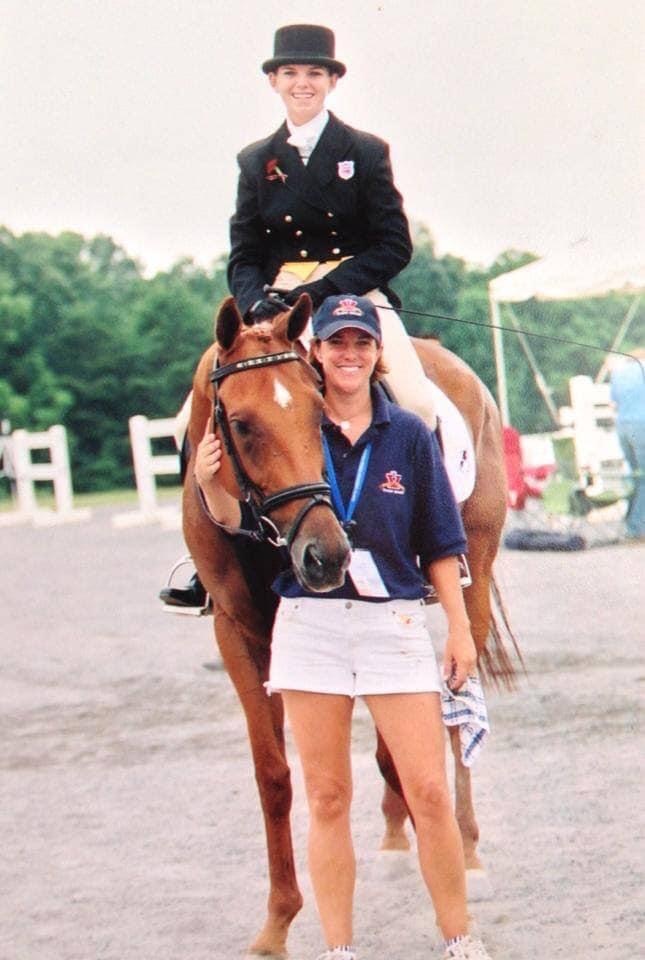
Brown’s goal to be selected for the Area V Young Rider team that year came true, and with several more fast and clear trips across the country that spring Brown and Sydney were on their way to the NAYRC at the Virginia Horse Center in Lexington, Virginia. “I remember being selected for the third slot on our team and the time on cross-country had been running very tight,” Brown said. “There was an option very early on in the course that had been causing some problems, including for our team, and I was told prior to heading out on course to take the long route. I was worried that by taking the long route that I wouldn’t make the time, to which Chrissy laughed and said not to worry, that I would make the time, and make it we did. Our double clean round helped our team clinch a silver medal finish and ninth individually. I couldn’t have been more ecstatic – we were one of the few pairs in the competition that had been together less than a year and we held our own.”
Brown and Hall both have favorite memories of Sydney that stand out from trying to get him in the start box on cross-country. “Chrissy was trying to get us into the start box and Sydney was performing his usual very overly-dramatic antics,” Brown said. “Chrissy somehow managed to get us into the box and Sydney literally exploded out of it. He was like riding a rocket on course, I’ve never ridden anything faster, and we very rarely had any issues with time. My mom was at the start box at this event, watching quietly as Sydney had his usual pre-cross-country anticipation party, and overheard one of the women working the start box say, ‘I wouldn’t want to be on course on that horse,’ to which my mom replied, ‘That’s the only horse you would want to go out on course on.’ He was so good at his job and if we ever had an issue it was definitely rider error. My mom said that she never doubted Sydney would bring me home and that I was on the most rock steady cross-country machine out there.” Hall added that trying to get Sydney in the start box was “like trying to put a kangaroo in a cat carrier.”
The fall after their success at the NAYRC, Sydney went off to college with Brown at the University of South Carolina, and they began training with Tiffani Loudon-Meetze. “Sydney and I had qualified for the USEA American Evening Championships (AEC) at the Carolina Horse Park,” Brown said. “It was an incredibly hot show and Sydney had been really struggling with the humidity. We had a fairly good dressage test with just a few bobbles that put us in the middle of the pack and a double clean cross-country round that jumped us up to third. We put in a double clean round in the show jumping, putting the pressure on the leaders who ultimately dropped a rail, making us the Champions of the Junior/Young Rider Open Preliminary division. Winning the AEC that year was a dream come true. We had put so much work into solidifying our partnership and going to our first show without our normal support team from home was daunting, but we leaned on each other and got it done.”
In 2006, Sydney and Brown moved up to the Intermediate level. They ran their first CIC2* (now CCI3*-S) at Greenwood Farm in June of 2006, placing ninth. That fall, Brown noticed that Sydney was struggling to maintain control of his hind end. The vet was called, and Sydney was diagnosed with EPM. Brown spent that fall and winter helping Sydney beat the disease.
The next spring, Sydney and Brown were back out competing at the Intermediate level and placed fifth in the CIC2* (now CCI3*-S) at Poplar Place Farm. In May, they headed to New Jersey for their first CCI2* (now CCI3*-L) at Jersey Fresh. “The morning after cross-country, I took Sydney out for a hack to loosen him up before the jog,” Brown said. “Something just didn’t seem right, but we couldn’t put our finger on it. It wasn’t like he was lame or off, but something wasn’t right. We withdrew him before show jumping and headed home. Once home, we went over him with a fine-tooth comb, we took x-rays, did flexion tests, everything we could think of to try and figure out what had happened and we couldn’t find what was wrong. We gave him a few weeks of quiet time and then were cleared to put him back into work.”
That fall, they tried again at the CCI2* (now CCI3*-L) at Ocala Horse Park. But Sydney still wasn’t right, so they withdrew after dressage. “We hauled him over to a vet clinic in Ocala that was able to perform a bone scan on his front legs to finally get to the bottom of whatever was going on,” Brown said. “The bone scan showed a heat register in both of his knees, which brought up more questions than answers. We returned home back to South Carolina and started discussing the scan with our local vet. We were referred to another vet clinic in a neighboring state to get another nuclear scan done to see if the heat register was still there after some time off. At the time, I was in the middle of my college exams, so my mom flew up to take Sydney to his appointment.”
The heat was still showing up in Sydney’s knees, even after some time off, and the vet’s theory was that Sydney was suffering from osteomalacia, a softening of the bones. “In their opinion, Sydney’s bones would continue to soften that they would eventually crumble and he would suffer skeletal collapse,” Brown said. “The only option in their opinion was euthanasia. Fortunately, my mother was not going to make that decision without a fight and so she refused the vet’s euthanasia option and brought him back home.”
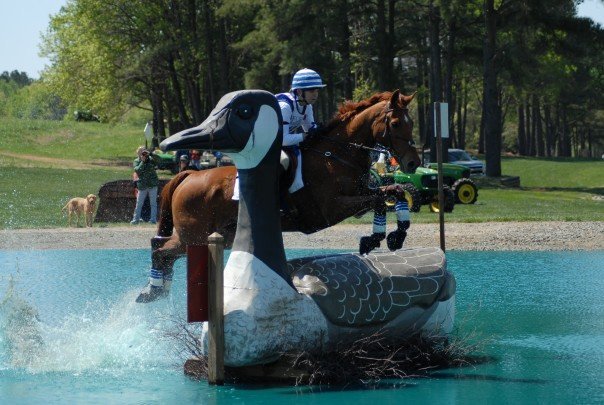
Back home in Texas, Brown’s mother connected with Dr. Sharon Shull, a vet at Texas A&M University and the mother of a fellow Area V Young Rider. “Dr. Shull forwarded the scans to a radiologist at the University who was not prepared to confirm the original vet’s diagnosis,” Brown recalled. “Dr. Shull was instrumental in getting us in touch with the right specialists to review Sydney’s case. A treatment plan was developed, which included a year off from work and a regiment of NSAIDs, and we would reevaluate after that time.”
“Sydney is NOT a horse that likes to be without a job, and he isn’t too terribly fond of being out in the pasture,” Brown said. “After the first month or two, Sydney started pacing nonstop. Since he was supposed to be resting, we tried every which way to deter his pacing, including leaving his halter and lead rope on, with the thought that he would step on it a couple of times and figure it would just be easier to stop pacing. That lasted about a week and then he figured out that he could just carry his head to the side while he paced, the rope would not interfere with his hooves. Since he was constantly bent one way or another with his neck, he would just walk in crazy circles. It was a VERY long year, to say the least.”
But the year did pass, and Sydney got the all clear to return to work in the spring of 2009. Sydney and Brown made a couple outings at the Preliminary level before moving back up to Intermediate. “When we started back on cross-country, Sydney developed this new habit of jumping any shadows or changes in the ground color,” Brown said. “It was like riding the most spastic rocket, leaping into the air for no reason at all, and at first I would become quite irritated with him. However, as time continued on, it became quite comical and there was many a course where I would just be laughing as we galloped across a field, jumping an entire road crossing or tree shadow.”
Brown graduated from the University of South Carolina in 2009 and moved to Charleston to go to grad school with Sydney in tow. It was there they found dressage trainer Katie Poag and began to work on improving his dressage capabilities. “She suggested that it would be wise to take him to a dressage show and enter him in several classes and keep putting him in the ring until he finally decided to take a breath and relax in the ring,” Brown said. “I think we did three tests the first day of the show and by the third test, he finally relaxed and was rideable. I’m pretty sure there was about a 10-point difference in our scores that day.”
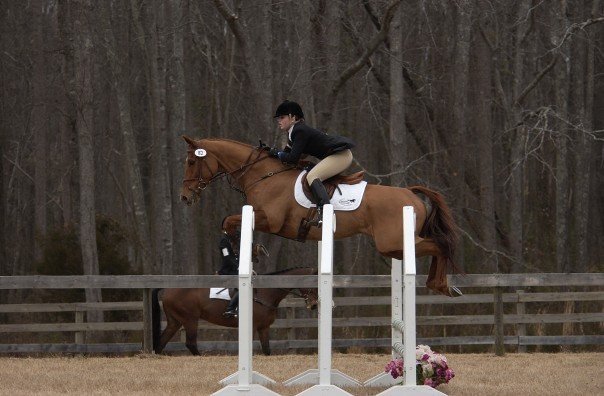
In 2010, Sydney and Brown completed their first Advanced level horse trial at Pine Top. “To say that I was nervous about the cross-country course would have been an understatement,” Brown said. “But in true Sydney style, once on course, all those nerves fell to the background and we started to get the job done. We had one stop on course, but I was ecstatic to complete our first attempt at Advanced.”
Brown popped off of Sydney at their next Advanced attempt at the Carolina Horse Park, and so they decided to drop back down to Intermediate for an event to bolster their confidence. “We were in a very competitive class at The Fork and after dressage, Sydney and I were in third place,” Brown recalled. “The cross-country was big and a true test of the level. When it came time to enter into the start box, I couldn’t get him in. I think we left over 20 seconds after our time had started and Sydney just ate up the course. We ended up winning the class, which was the confidence boost that I needed to jump back up to Advanced.”
Their next event, the Advanced at Chattahoochee Hills, would be their last together. “My favorite memory of that show was the stadium warm up,” Brown said. “There were several WEG pairs in our class and David O’Connor was there warming them up. I let my nerves get the best of me with all of the big names that were there in that ring and we were cantering up to one of our warm-up fences, a little vertical, and I wasn’t fully paying attention and Sydney slammed on the breaks. I was so embarrassed and I believe there were some stern comments from Tiffani about getting my head in the game. If you ever stopped riding him, Sydney would always remind you of it – he never stopped teaching me that lesson. There had been a lot of rails in the show jumping and my confidence had just taken a major blow in the warm-up. We went into the ring and delivered one of the only few double clean rounds of the entire division. While the placing might not have been something to write home about, I was so very proud of everything that we had accomplished and delivering that double clean round.”
That fall, Brown started a new job and decided that, given the limited time she had at the barn, campaigning at the Advanced level wasn’t the best idea. Instead, they went to play in the dressage arena, competing at Fourth Level and earning her USDF Silver Medal. “Once again, we asked something of Sydney that wasn’t his most favorite thing to do (he really hated the canter pirouettes in the Fourth Level test), and he stepped up to the plate,” Brown praised. “My last dressage test was at the Fourth Level with him and I cried pretty much the entire test. I knew it was time to hand over the reins, but Sydney had done so much for me and we had been through so much together, it was hard to imagine we had reached our journey’s end. I’m sure the judge thought I had lost my mind, but they were happy tears.”
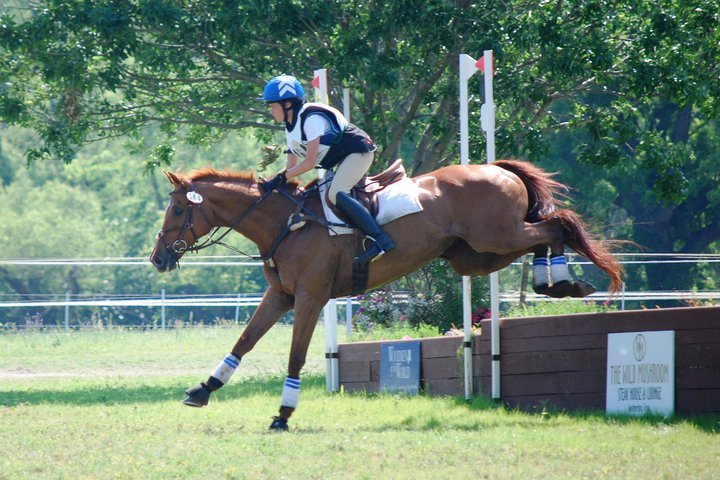
So, Brown sent Sydney back to Texas to the student of her friend Rebecca Brown, 15-year-old Katie Resnick. Resnick rode in her first horse trials in 2010 and was looking for something she could move up to Training level with. “I remember the first time I rode him,” Resnick recalled. “I had never used so much tack on a horse. I’d never used the breastplate, the martingale, a pelham bit – it was so much tack for one horse! But he was a delight to ride.”
Sydney and Resnick competed at the Novice level in the spring of 2011, picking up two wins and a second place and qualifying for the AEC at Chattahoochee Hills that fall. They competed in the Junior Novice Championship and finished on their dressage score in sixth place in a division of 57 riders. Resnick moved up to the Training level with Sydney after the AEC, earning two third-place ribbons.
“He always took care of me, but he would spook at the smallest little things,” she recalled with a laugh. “He started getting me moving towards the upper levels. He LOVED having a job. He was the one that could take care of you but still required you to also ride well – I think he liked having someone to take care of.”
Resnick had Young Rider aspirations as well, but at the age of 18 the Preliminary level was a bit too much for Sydney. So, Sydney went back to Hall’s barn in Prosper, Texas, where Brown asked Hall to put Sydney up for sale. Within a week Hall had someone scheduled to come try Sydney, but Brown called her and asked her to take him off the market. “After everything that he had done for me, I felt that I owed him the happiest later years of his life,” Brown said.
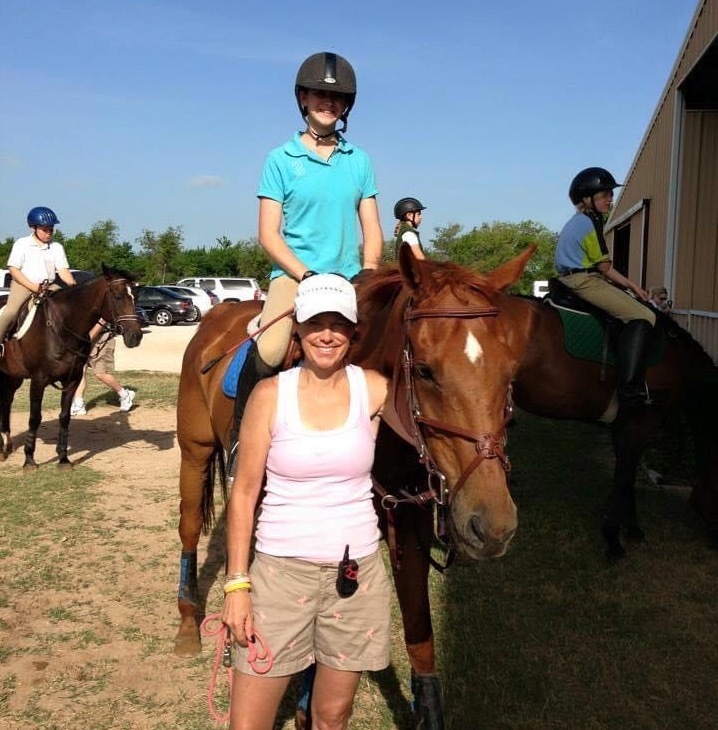
Sydney took on the job of teacher to Hall’s daughter Izzy, showing her the ropes of eventing at the Beginner Novice and Novice levels, before being leased out to Barrett Barksdale, another student of Hall’s. Previously, Barksdale had only ridden lesson horses, so Sydney was the first horse she got to call hers. “Sydney proceeded to teach me many lessons; most importantly, how to fall off safely,” Barksdale said. “He dumped me more times than I can count, but he taught me how to ride. I think there was a span of six weeks where I fell off at every jump lesson, but now I have an extremely sticky seat because of it.”
In their first two years together, Sydney and Barksdale competed at unrecognized events before Sydney told Barksdale that he was ready to retire from jumping. “I was a freshman in high school and Sydney was 19,” Barksdale said. “At the time, my parents were not able to afford a second horse. Multiple trainers, including Chrissy, tried to get me to look at different horses. Chrissy would have looked after Sydney, but I loved him too much to give the ride to someone else. I could not fathom going without seeing his face every day.”
Although ready to retire from jumping, Sydney was nowhere near ready to be fully retired. So, Barksdale switched her focus to dressage. “I missed jumping but being able to keep Sydney made up for it,” Barksdale said. In 2014, they were seventh and fifth in the Training and First Level Junior/Young Rider divisions at the USDF Region 9 Championships, and in 2015, they returned to the championships to place sixth in the First Level Junior/Young Rider division.
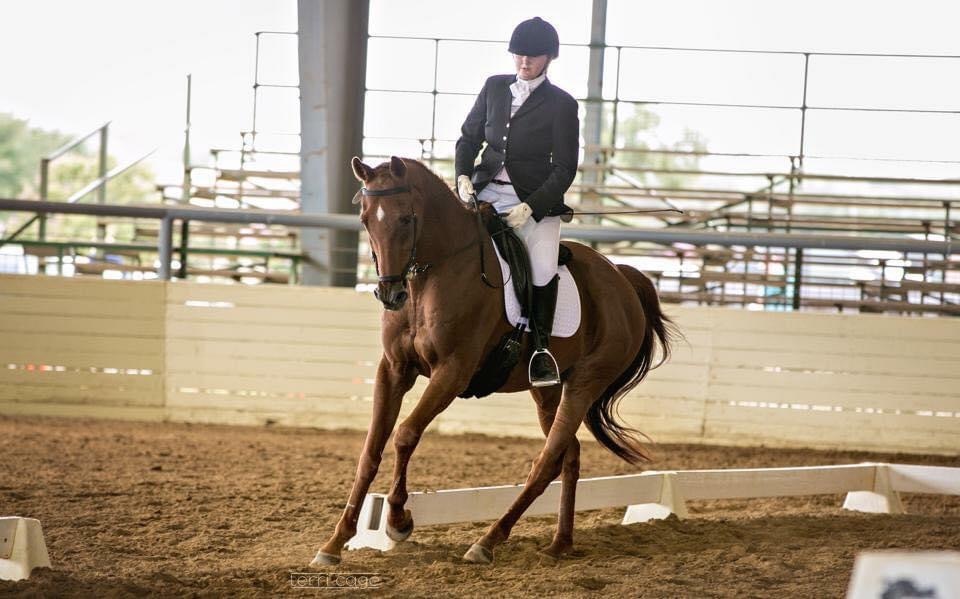
“The awards ceremonies were always a highlight with Sydney,” Barksdale recalled fondly. “I have little to no high-quality ceremony pictures, because he was a blur, racing around the arena and overtaking those who placed ahead of us.”
In 2016, at 22 years old, Sydney injured his suspensory ligament while out in his pasture. After Barksdale rehabbed the injury, she retired Sydney for good. That spring, when Barksdale graduated from high school, Brown and Hall gifted full ownership of Sydney to her. “Sydney was my once-in-a-lifetime horse, but Sydney is Barrett's soulmate horse,” Brown said. “I am so lucky that she loves and adores him like he should be, despite his high maintenance tendencies and very quirky behaviors.”
When Barksdale went off to college at Texas A&M University, she took Sydney with her. He is now happily retired (although it took him some time to adjust to the retired life) at Chestnut Creek Farm in College Station, Texas. “Chuck, one of the owners, has been a tremendous blessing with Sydney’s retirement,” Barksdale said. “He was the one who convinced Sydney that it was okay to be a pasture ornament. Chuck has infinite patience with Sydney and handles his quirks well. Sydney currently lives in a huge stall with an attached run where he spends most of his time basking in the sun.” Sydney will celebrate his 27th birthday in January.
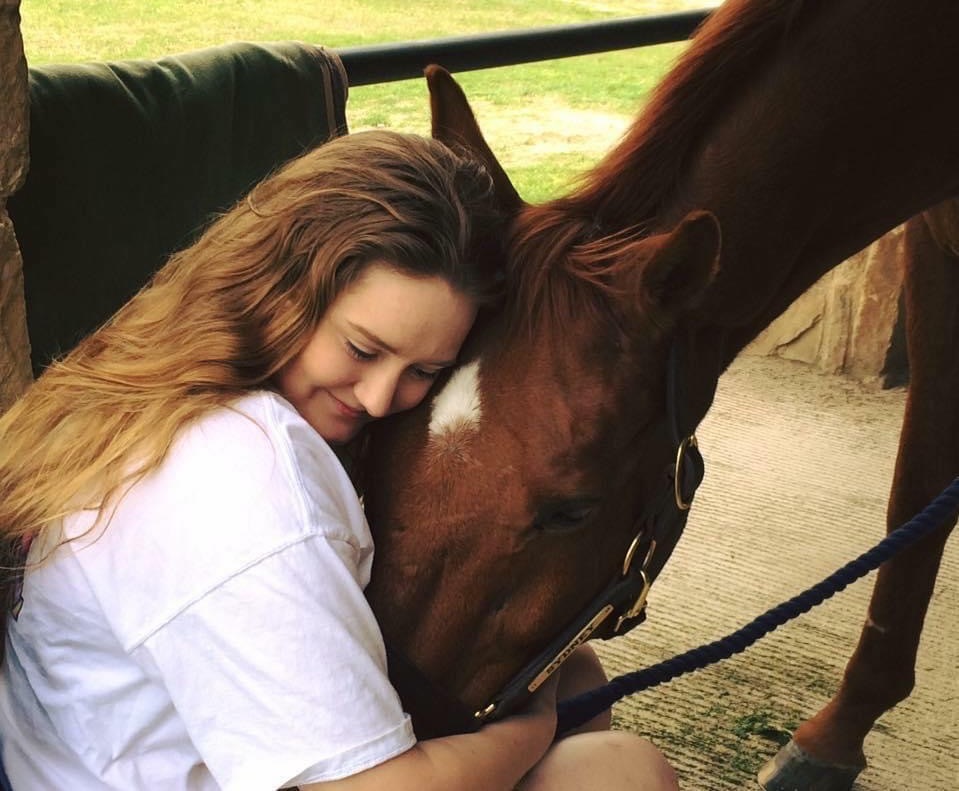
“He is my best friend,” Barksdale stated. “Although I was not able to event with him for as long as I would have liked, I have never regretted giving up jumping to keep Sydney. My actions ensured that Sydney has gotten the love and retirement that he deserves.”
“What I am especially grateful for is the friendship that Barrett and I now have because of this crazy little Thoroughbred horse that bonds us,” Brown added. “We cheer each other on at our dressage shows and love to sit and talk about Sydney. He truly is loved and adored by his people, and I think that’s because he truly formed a partnership with each of us, trying his heart out to achieve and perform everything that was asked of him.”
“We consistently call ourselves the Sydney fan club,” Barksdale concluded. “Who knew that such a quirky, little dude would bring us all together!”
The USEA Horse Heroes series celebrates equine athletes who have contributed to the sport again and again, competing with multiple riders at the upper levels of the sport. Do you know of a horse hero who deserves recognition? Email your tips to [email protected].

